Endangered species cling to existence in Death Valley’s shrinking wetlands
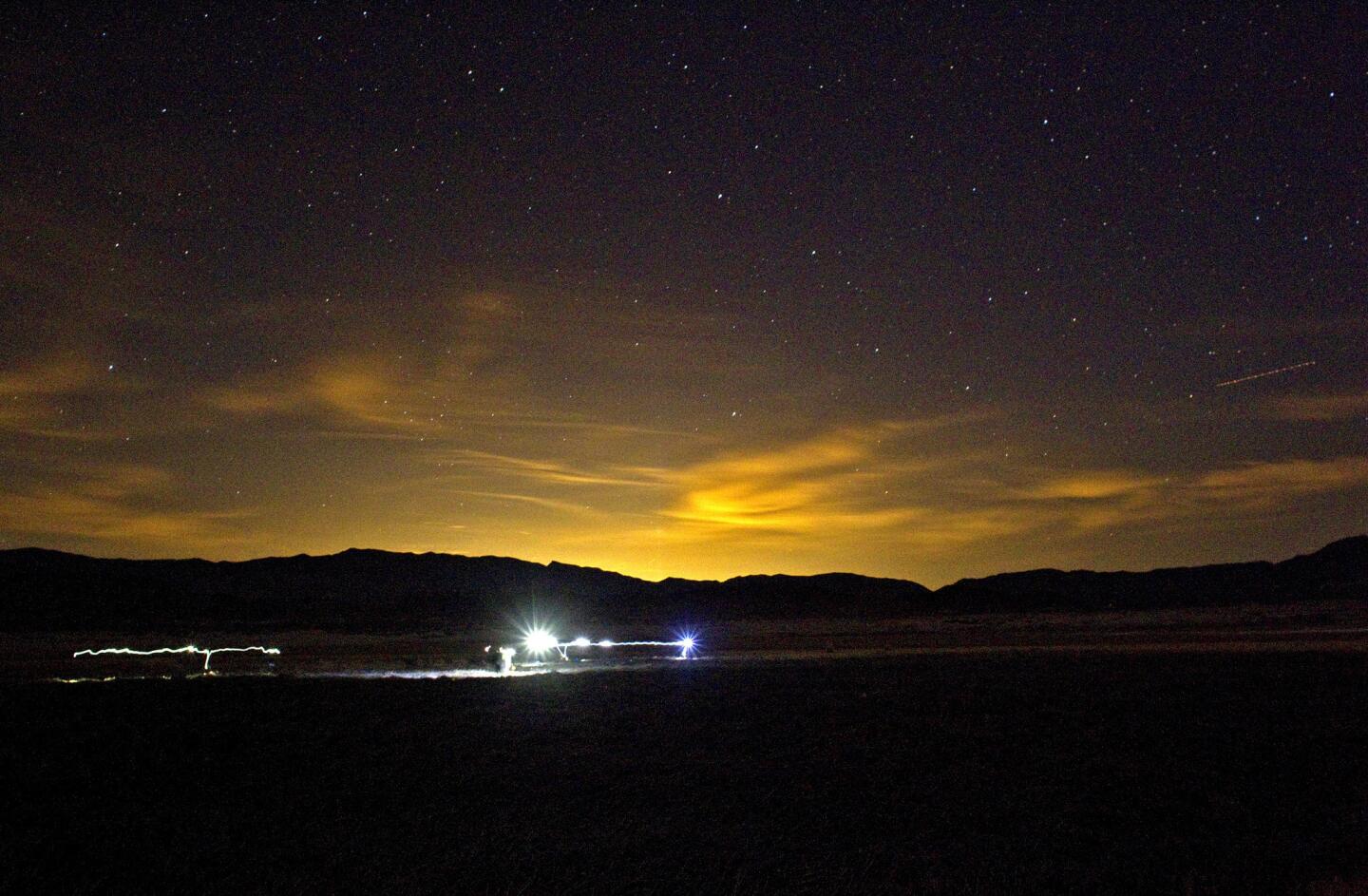
Under gleaming stars, Janet Foley, an epidemiology professor at UC Davis’ School of Veterinary Medicine, leads a team of scientists wearing headlamps through the marshlands of the Mojave Desert to check live traps set to catch the Amargosa vole. (Gina Ferazzi / Los Angeles Times)
East of Death Valley National Park, about 200 Amargosa voles cling to life in habitats prone to disease, inbreeding and predation. Now, voles and other threatened or endangered desert species face more challenges by drought and climate change. Read the story
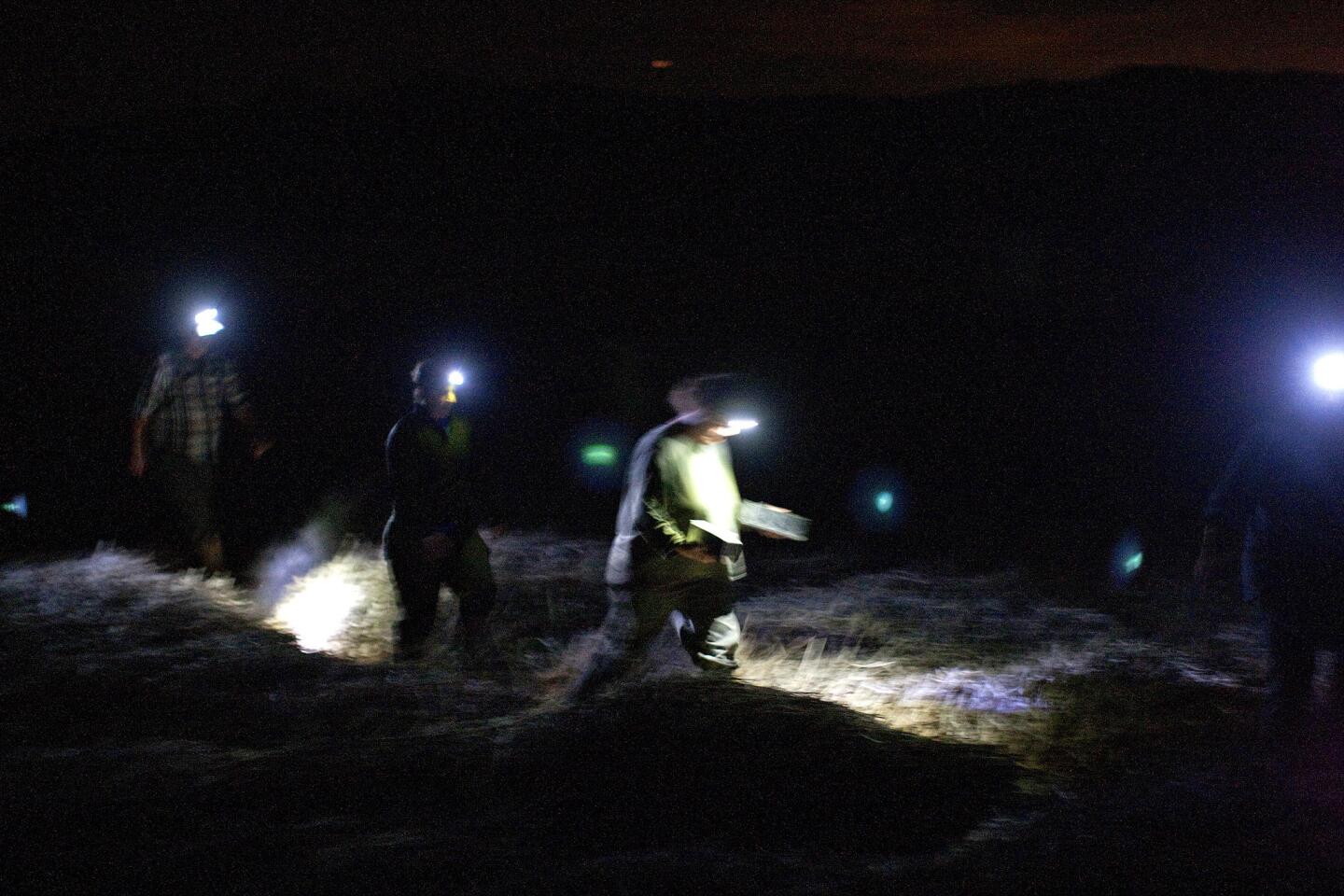
Wearing headlamps, the researchers check traps for voles. When they find one, they record its vital statistics, attach an identification tag to its ear and release it back into the wild. (Gina Ferazzi / Los Angeles Times)
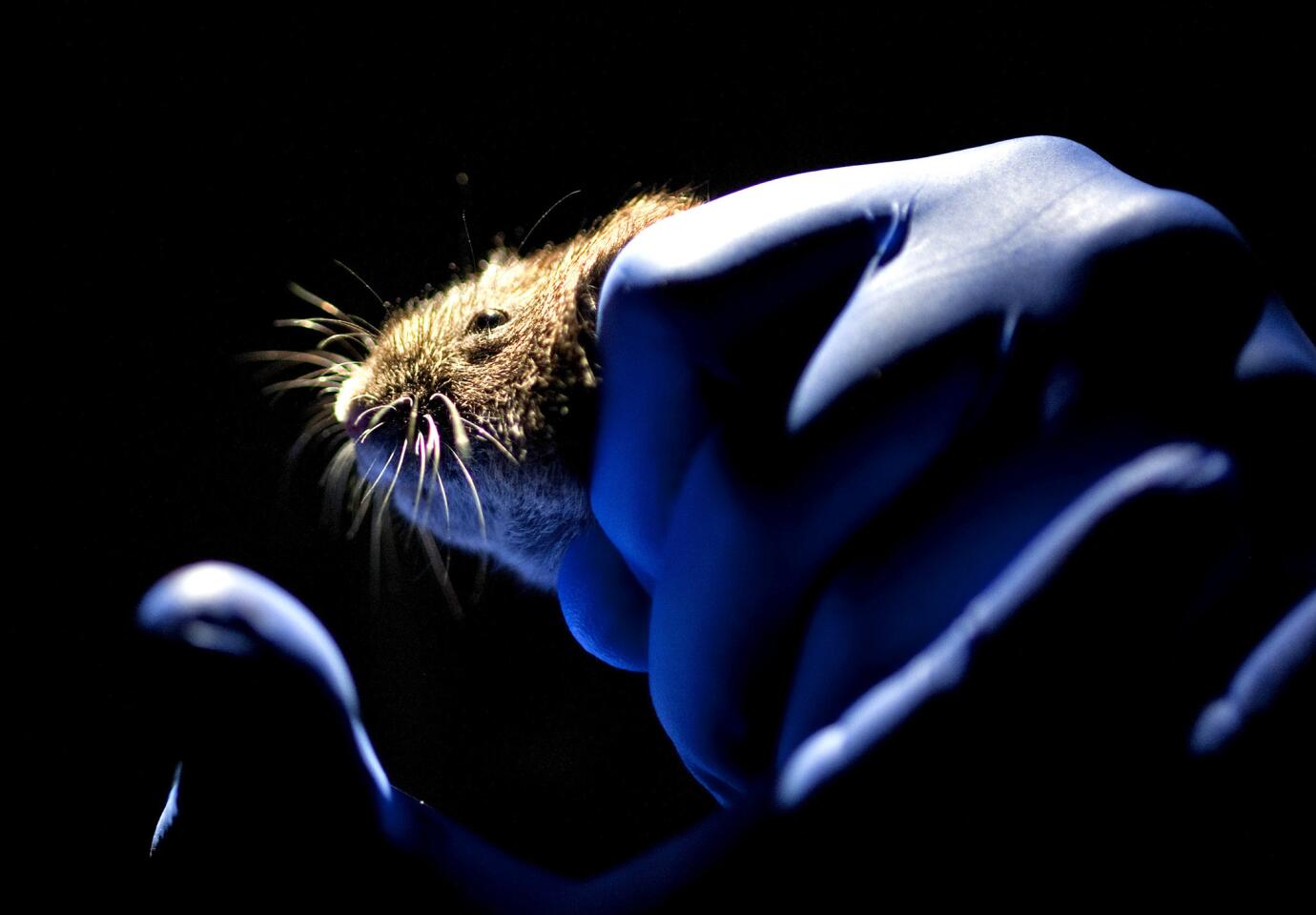
Only about 200 Amargosa voles remain in the shrinking wetlands east of Death Valley National Park. (Gina Ferazzi / Los Angeles Times)
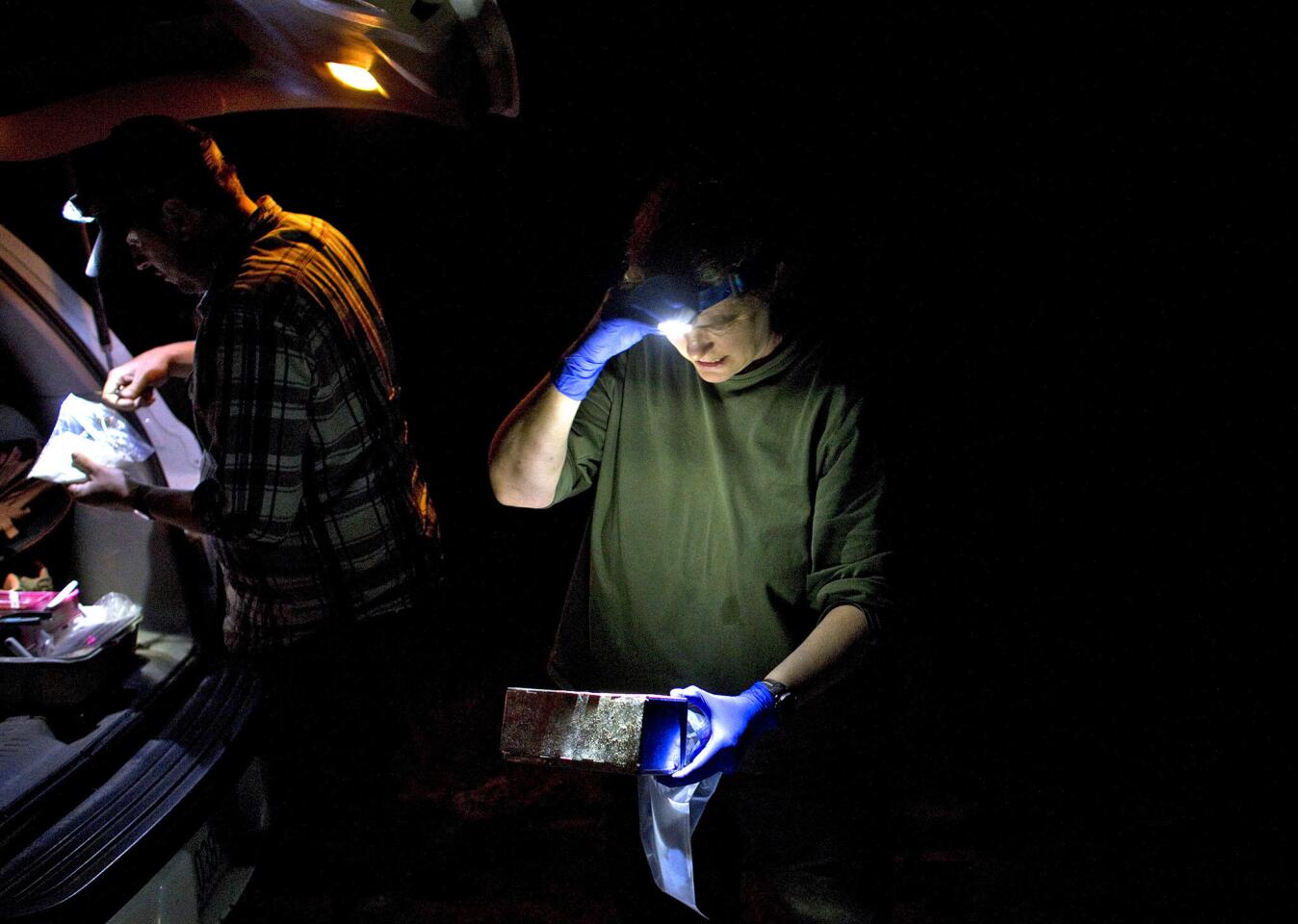
Janet Foley checks the condition of an Amargosa vole caught in a live trap. (Gina Ferazzi / Los Angeles Times)
Advertisement
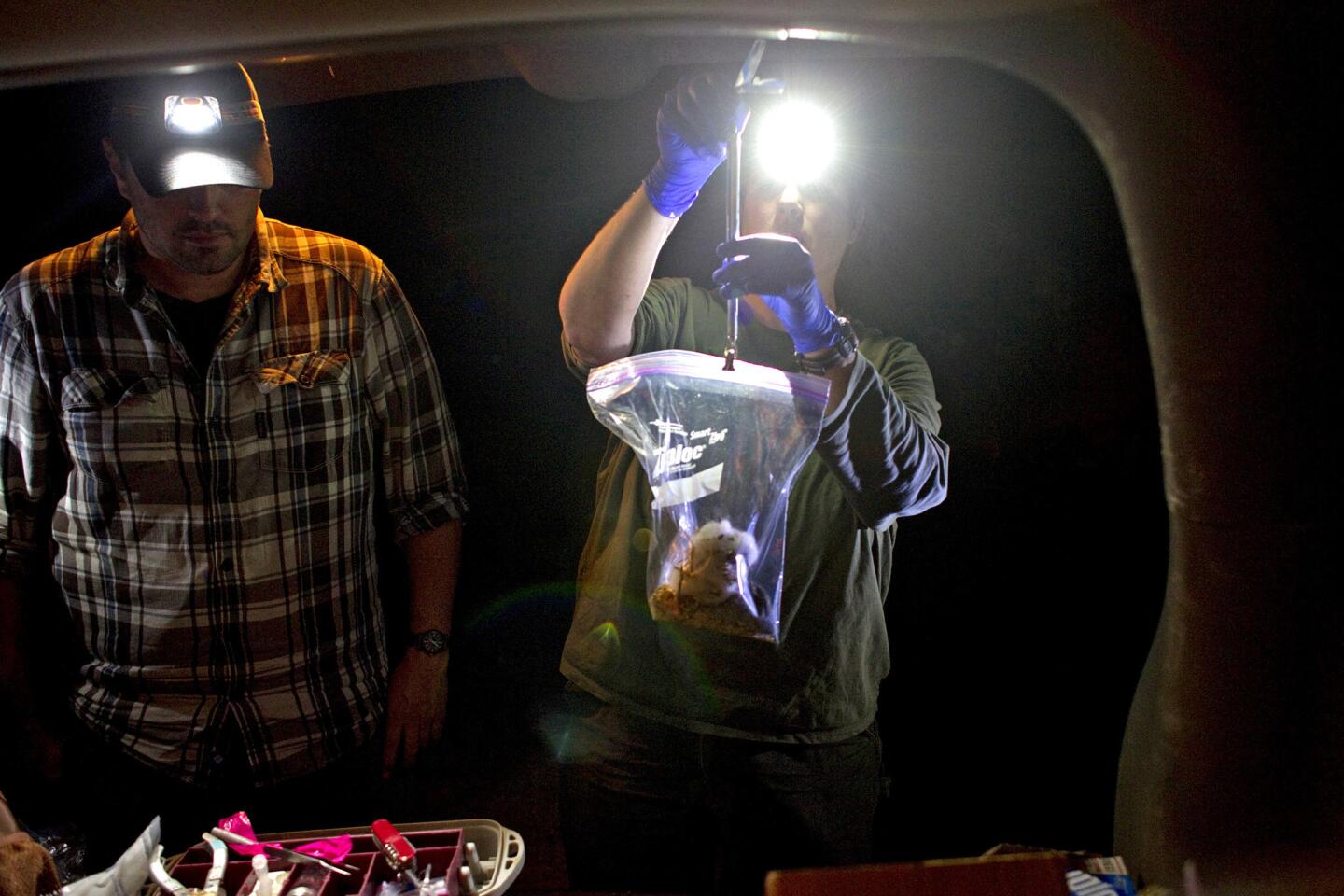
Janet Foley weighs an Amargosa vole.”Marshes that once were robust, green and 10 meters wide are now brown and shrinking,” Foley said. “The voles we’re finding are distinctly thinner.” (Gina Ferazzi / Los Angeles Times)
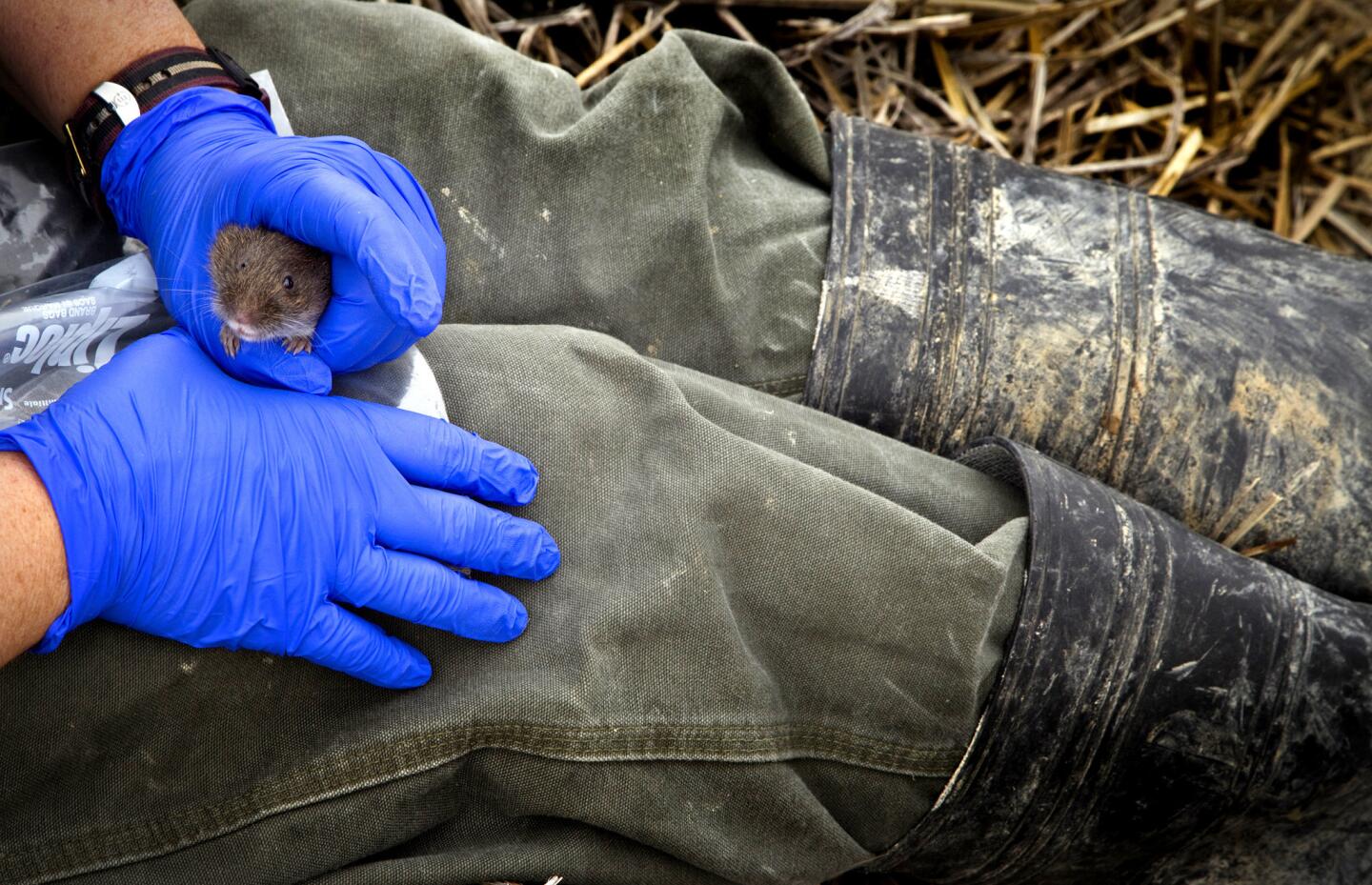
Janet Foley holds an Amargosa vole caught in the marshlands of the Mojave Desert. (Gina Ferazzi / Los Angeles Times)
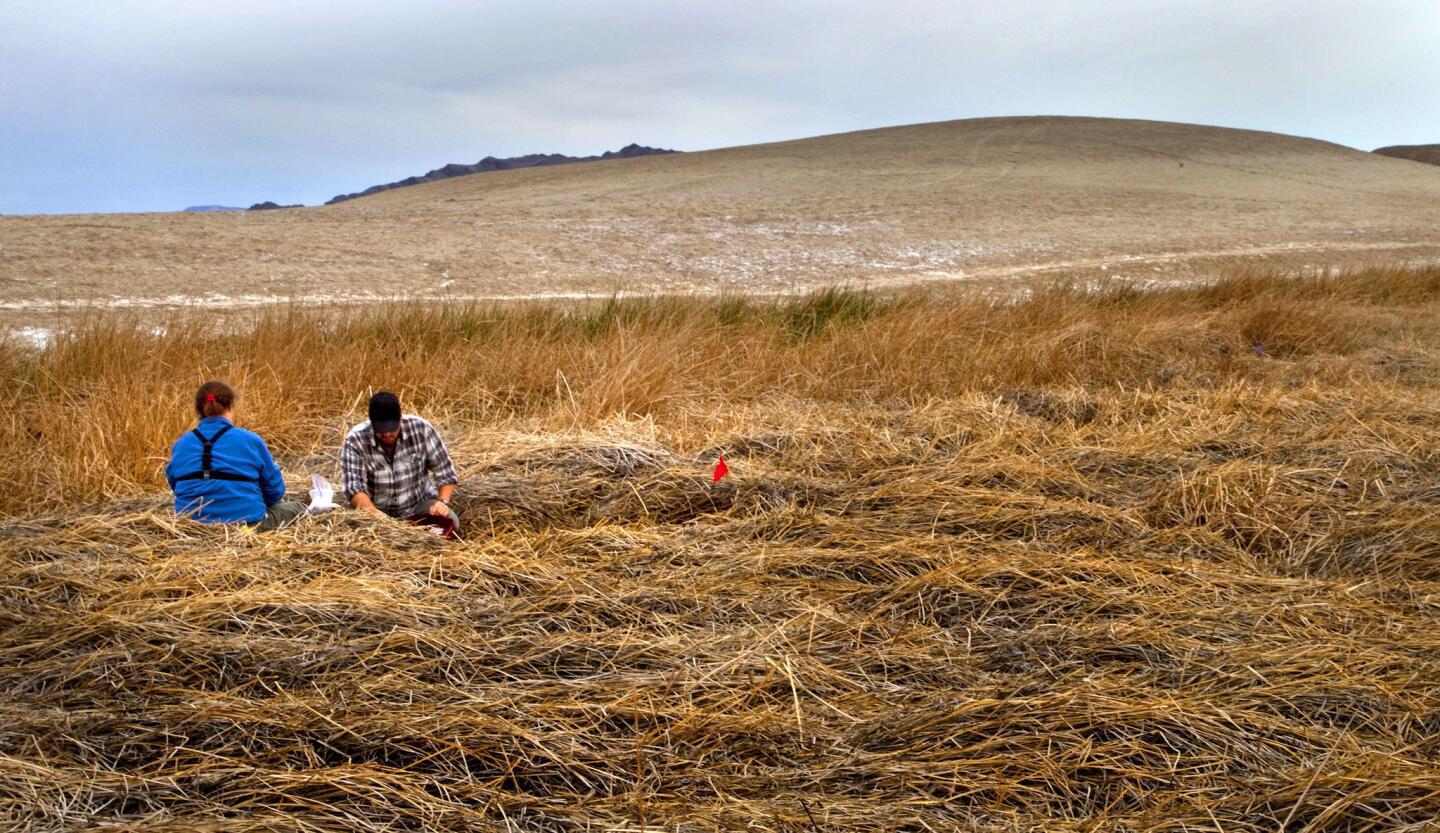
Janet Foley examines Amargosa voles caught in the Mojave Desert. The voles are under consideration for emergency translocation, habitat restoration and captive breeding programs. (Gina Ferazzi / Los Angeles Times)
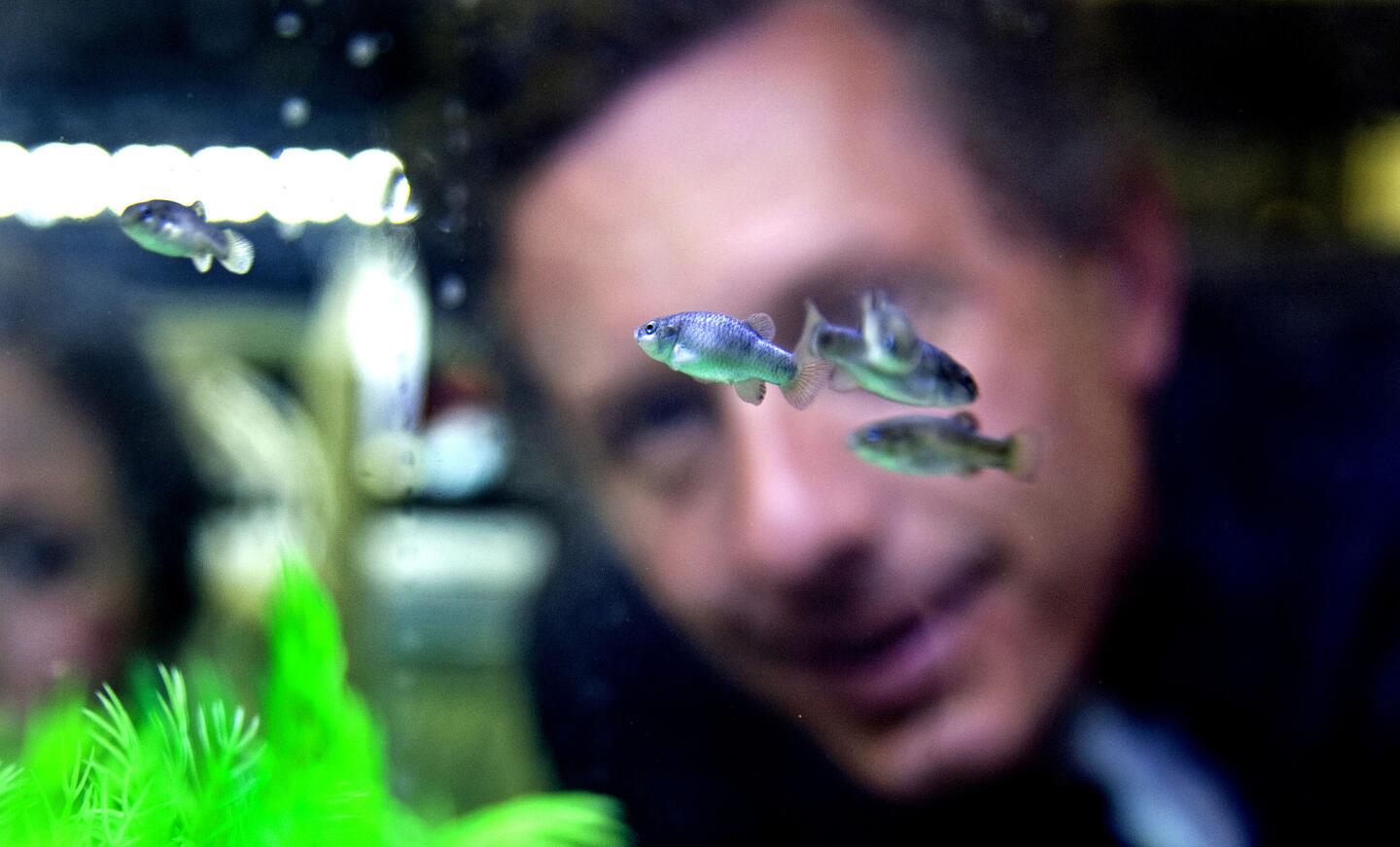
Aquaculturist Olin Feurbacher watches the endangered Devil’s Hole pupfish swim in an aquarium at the Ash Meadows Fish Conservation facility in Nevada. (Gina Ferazzi / Los Angeles Times)
Advertisement
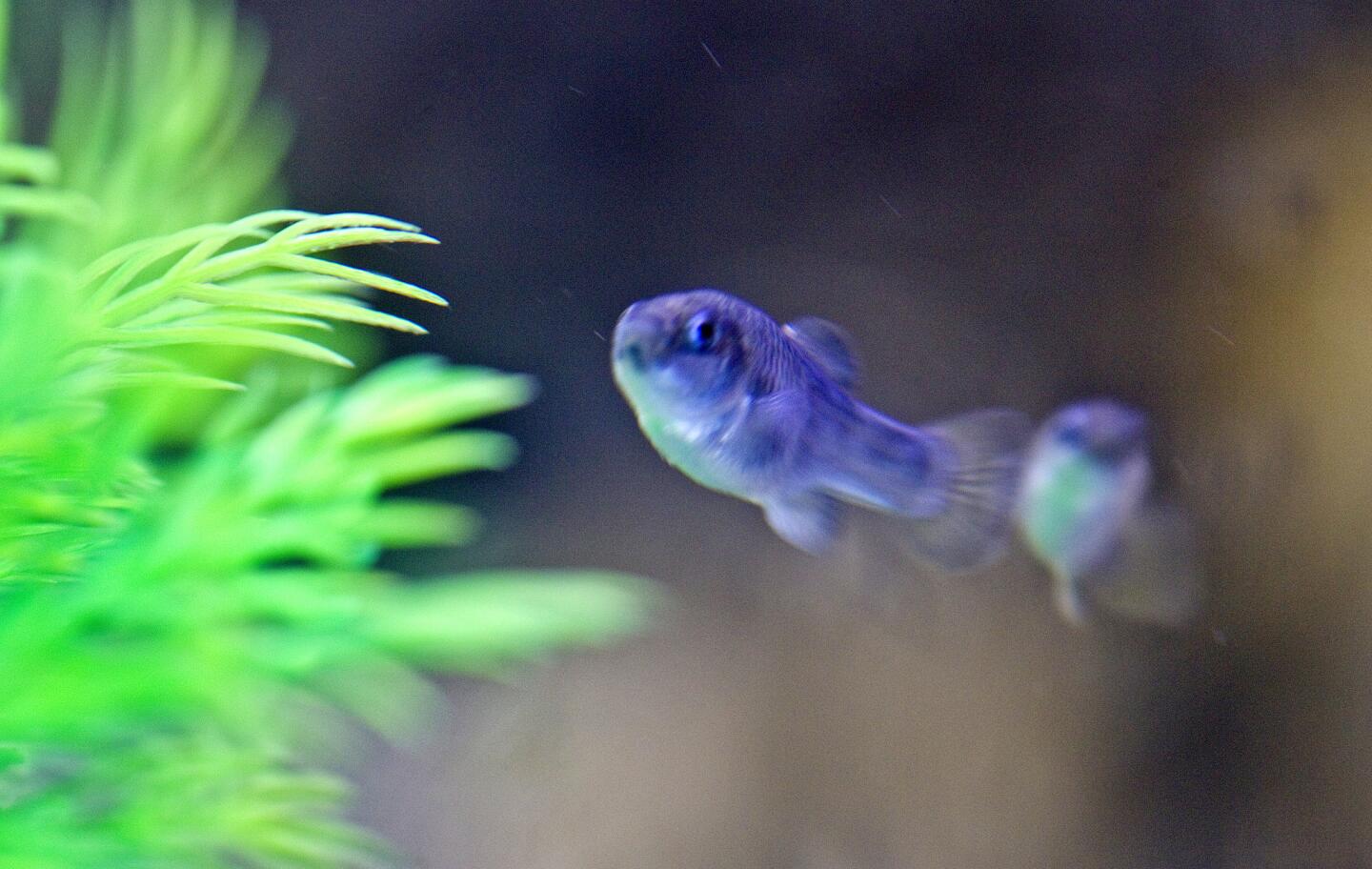
A Devil’s Hole pupfish swims in an aquarium at the Ash Meadows National Wildlife Refuge. The imperiled Devil’s Hole pupfish population has fallen to an all-time low of 60. (Gina Ferazzi / Los Angeles Times)
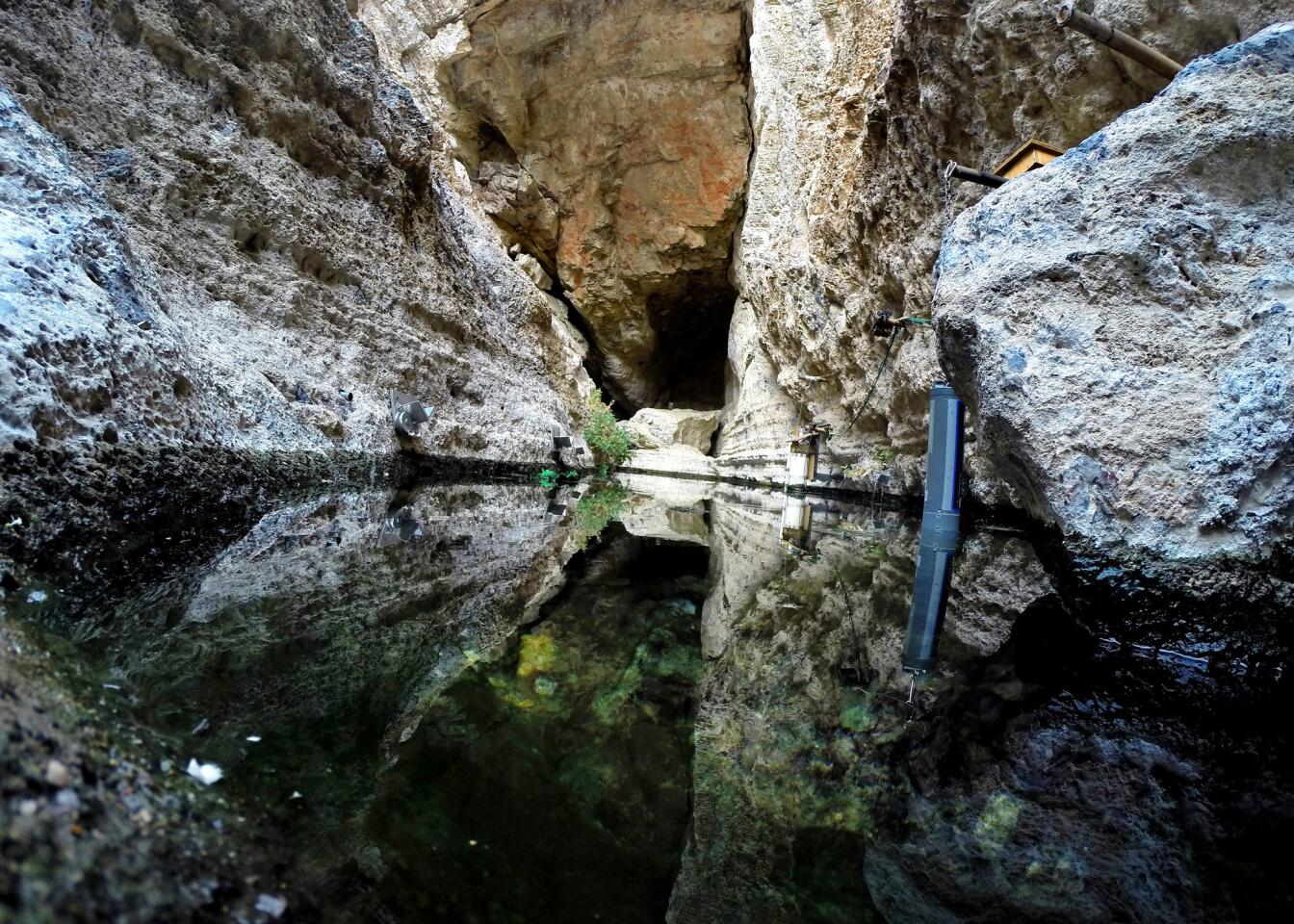
The Devil’s Hole pupfish population has survived in this remote rock tub since the Ice Age, but the water’s rising temperature could destroy the Devil’s Hole pupfish reproduction and egg development, researchers warn. (Gina Ferazzi / Los Angeles Times)







